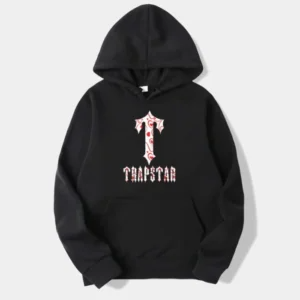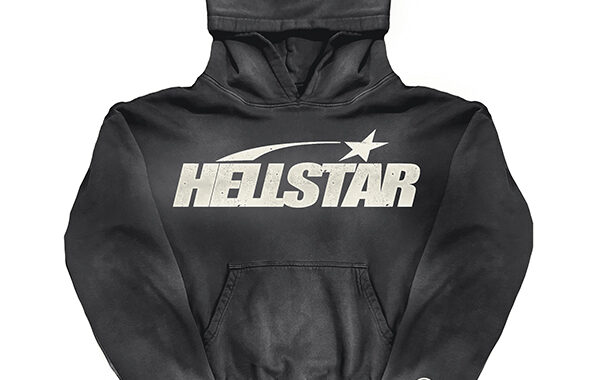The Rise of Trapstar: From Streetwear to Global Fashion

Introduction
In the world of streetwear, few brands have captured the imagination and loyalty of the youth like Trapstar. Founded in the heart of London, Trapstar has grown from a grassroots movement to a global fashion powerhouse. This article delves into the origins, evolution, and impact of Trapstar, exploring how it has managed to stay relevant and influential in an ever-changing fashion landscape.
Origins and Early Days
Trapstar was founded in 2005 by friends Mikey, Lee, and Will. The trio shared a passion for fashion, music, and street culture, which inspired them to create a brand that reflected their unique style and perspective. The name “Trapstar” is a nod to the “trap” music genre and the idea of being a star in one’s own right, regardless of mainstream recognition.
Starting out by creating custom t-shirts for themselves and their friends, the founders quickly realized there was a demand for their unique designs. The early days were marked by a DIY ethos, with the founders printing designs in Mikey’s bedroom and selling them at local markets and events. This grassroots approach helped Trapstar build a loyal following and a strong sense of community around the brand.
Rise to Prominence
Trapstar’s big break came when they began collaborating with influential figures in the music industry. Artists like Rihanna, Jay-Z, and A$AP Rocky were seen wearing Trapstar gear, which significantly boosted the brand’s visibility and credibility. These high-profile endorsements helped Trapstar transition from a local favorite to an internationally recognized label.
One of the key elements of Trapstar’s success is its ability to blend streetwear with high fashion. The brand’s designs often feature bold graphics, striking logos, and a mix of edgy and elegant elements. This unique aesthetic has resonated with a wide audience, from streetwear enthusiasts to fashionistas looking for something fresh and different.
Collaborations and Expansions
Trapstar’s collaborations have played a crucial role in its growth. The brand has partnered with a range of companies and artists, from sportswear giants like Puma to iconic music acts like The Weeknd. These collaborations have allowed Trapstar to reach new audiences and push the boundaries of its design capabilities.
In addition to collaborations, Trapstar has also expanded its product line to include a wide range of apparel and accessories. From hoodies and jackets to hats and bags, the brand offers a comprehensive selection of streetwear staples. This diversification has helped Trapstar cater to various tastes and preferences, ensuring its continued relevance in the fashion industry.
Cultural Impact
Beyond fashion, Trapstar has made a significant impact on popular culture. The brand’s designs often incorporate references to music, movies, and art, creating a rich tapestry of influences that resonate with its audience. This cultural relevance has helped Trapstar maintain its edge in a competitive market.
Trapstar’s influence extends to the world of music, where it has become a staple in the wardrobes of many hip-hop and grime artists. The brand’s association with these music genres has further solidified its status as a key player in streetwear culture. Additionally, Trapstar has been featured in numerous music videos, further cementing its place in the cultural zeitgeist.
Community and Social Responsibility
Despite its success, Trapstar has remained committed to its roots and the community that supported it from the beginning. The brand often collaborates with local artists and organizations, using its platform to give back and support emerging talent. This commitment to community and social responsibility has endeared Trapstar to its fans and reinforced its authenticity.
One notable example of Trapstar’s community involvement is its work with youth organizations in London. The brand has sponsored workshops, mentoring programs, and events aimed at empowering young people and providing them with opportunities to develop their skills and talents. This focus on social responsibility sets Trapstar apart from many of its competitors and highlights the brand’s dedication to making a positive impact.
Challenges and Future Prospects
Like any successful brand, Trapstar has faced its share of challenges. The streetwear market is notoriously competitive, with new brands constantly emerging and vying for attention. To stay ahead, Trapstar has had to continually innovate and evolve, balancing the need to stay true to its roots while also adapting to changing trends.
The future looks bright for Trapstar, with plans for further expansion and new collaborations on the horizon. The brand’s ability to consistently deliver fresh, exciting designs while maintaining its core identity will be key to its continued success. As Trapstar navigates the ever-changing fashion landscape, it remains a beacon of creativity, authenticity, and resilience.
Conclusion
Trapstar’s journey from a bedroom-based startup to a global fashion phenomenon is a testament to the power of passion, creativity, and community. The brand’s unique blend of streetwear and high fashion, coupled with its deep cultural relevance and commitment to social responsibility, has set it apart in a crowded market. As Trapstar continues to grow and evolve, it stands as a shining example of what can be achieved when vision and determination collide. Whether you’re a long-time fan or new to the brand, there’s no denying the impact and influence of Trapstar in the world of fashion.

 Unveiling the Mystique: Hellstar Shirt
Unveiling the Mystique: Hellstar Shirt  The Ultimate Guide to Choosing the Right Essentials Hoodie
The Ultimate Guide to Choosing the Right Essentials Hoodie  Choosing Between Home Remedies and Professional Tattoo Removal in Kolkata
Choosing Between Home Remedies and Professional Tattoo Removal in Kolkata  Trends of Charcoal black hair in 2024
Trends of Charcoal black hair in 2024  Shein Accessories: A Must-Have for Fashion Lovers in Pakistan
Shein Accessories: A Must-Have for Fashion Lovers in Pakistan  Layer Up: How to Style Hoodies for Ultimate Winter Warmth
Layer Up: How to Style Hoodies for Ultimate Winter Warmth  Exploring London’s Best Butcher Shops
Exploring London’s Best Butcher Shops  Enhance Your Shop Appeal with Sydney’s Best Carpentry Services
Enhance Your Shop Appeal with Sydney’s Best Carpentry Services  A Detailed Look at the Features of the LEGO Technic Mars Crew Exploration Rover
A Detailed Look at the Features of the LEGO Technic Mars Crew Exploration Rover